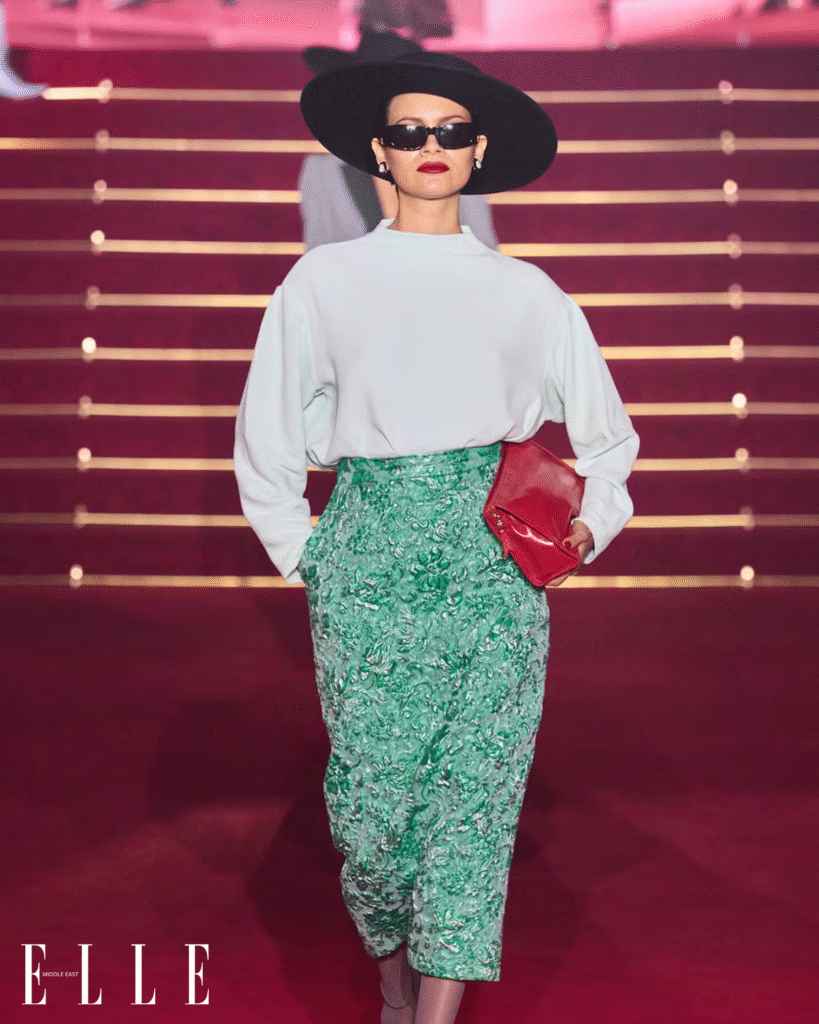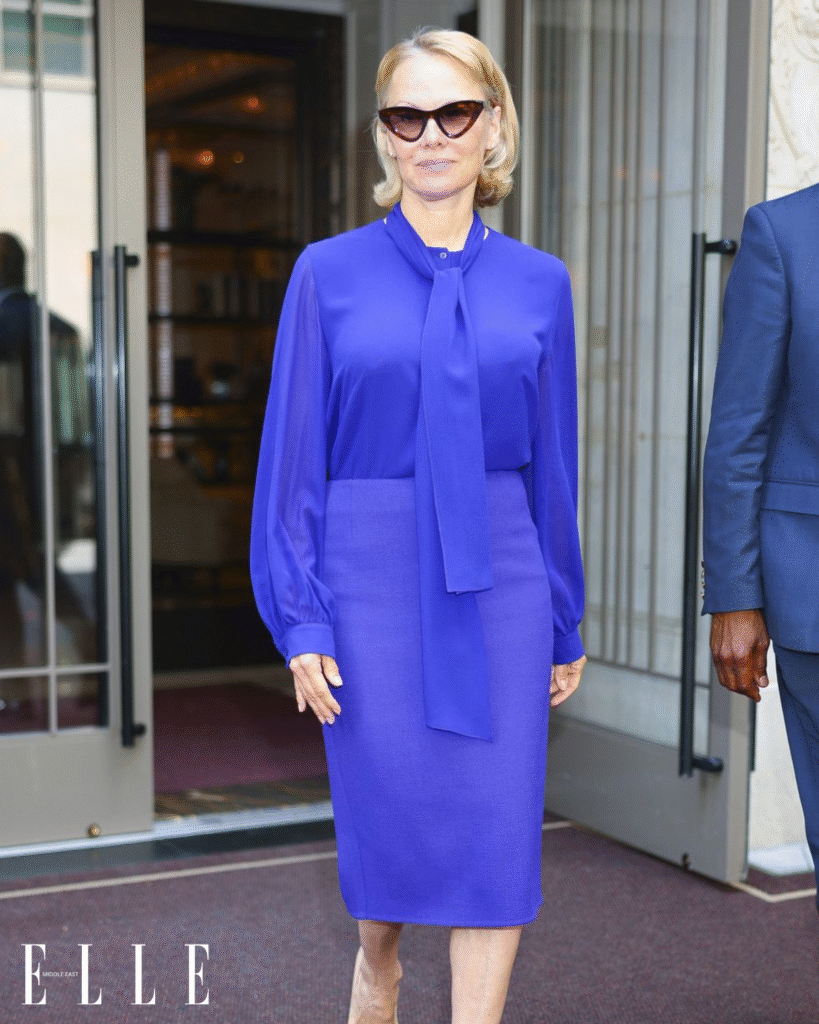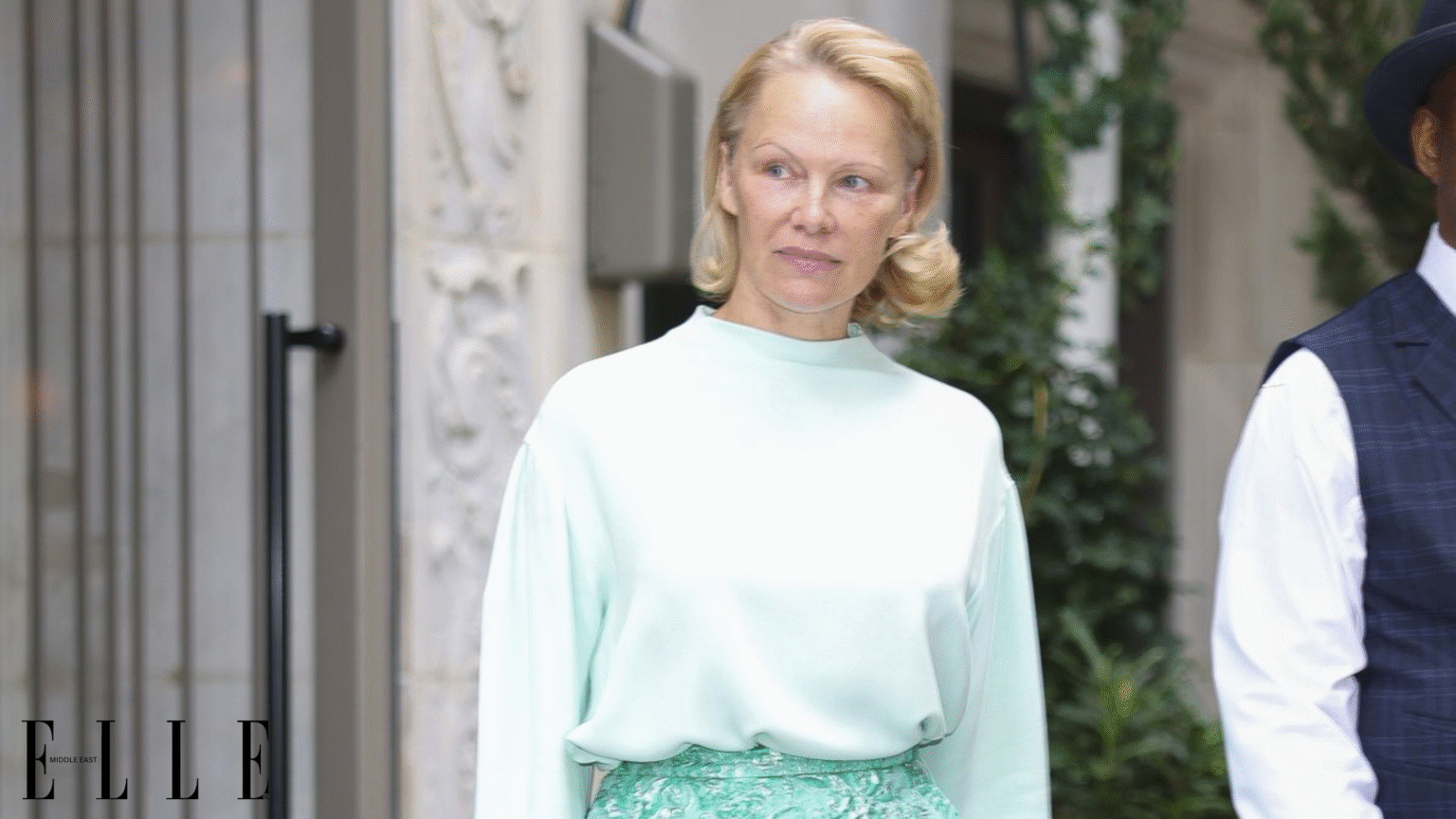Lights, Camera, Legacy: Pamela Anderson Returns to the Spotlight
The bright lights of New York City have seen it all—from Broadway stars to fashion’s finest—but on a recent night, the city paused as Pamela Anderson stepped out, turning heads and commanding attention in a look that fused Old Hollywood elegance with modern runway edge. Clad in a showstopping ensemble by Willy Chavarria, fresh from the designer’s latest collection, Pamela proved once again why she remains a timeless figure in pop culture.
Her appearance wasn’t just a style moment—it was a statement. The former Baywatch star, activist, and actress reasserted her position as a fashion force, unapologetically sophisticated and completely in control of her narrative.
Willy Chavarria Meets Hollywood Heritage

Pamela’s choice to don Willy Chavarria is significant. Known for his bold silhouettes, socially-conscious design, and forward-thinking fashion, Chavarria’s brand isn’t about blending in—it’s about standing out with purpose. And Pamela, a woman who has continually redefined herself over decades, wears it with ease.
The look—elegant, architectural, and daring—felt like a cinematic moment frozen in time. Think: Rita Hayworth meets 21st-century rebellion. With a structured coat draped over her shoulders, tailored pants, and a sharp red lip, Pamela echoed the drama of 1940s glamour while anchoring it in modern-day relevance.
The styling, minimal yet potent, let the craftsmanship speak. The lighting of the city, the flashbulbs of paparazzi, and Pamela’s unshakeable poise did the rest.
A Career Defined by Reinvention
For most, Pamela Anderson will forever be the beach-blonde icon in a red swimsuit. But that image, while legendary, only scratches the surface of a woman who has continually evolved in front of the camera—and behind it.
From Hollywood stardom to activism, from reality TV to literary memoir, Pamela has worn many hats (and many looks). Her recent fashion-forward resurgence is a reminder that age doesn’t define relevance, and true beauty comes from embracing one’s story—flaws, failures, and all.
In recent years, Pamela has leaned into a more natural and authentic aesthetic, choosing bare-faced appearances at Fashion Week and stripped-down photo shoots. Yet, this return to high drama feels less like a contradiction and more like a celebration of duality—the softness and the strength, the icon and the individual.
The Power of Nostalgia in a Modern World
Pamela’s New York moment taps into a cultural moment that reveres nostalgia with a twist. As fashion circles back to old-world glamour—from corsetry to structured tailoring—modern icons like Pamela bring emotional weight to these styles. She’s lived through eras of tabloid frenzy, gendered criticism, and reinvention. When she evokes Marilyn, Ava, or Lauren Bacall, it doesn’t feel like cosplay—it feels earned.
In a time where influencers often rise and fall in the blink of an algorithm, Pamela’s presence feels anchoring. Her longevity isn’t just about good looks or luck—it’s about grit, grace, and cultural relevance earned the hard way.
Why This Moment Matters

Pamela Anderson’s resurgence isn’t just a red carpet appearance—it’s a cultural correction. For decades, she was reduced to a pin-up, a punchline, or a paparazzi target. But today, through fashion, memoir, and film, she is reclaiming her story. And that makes her style statements far more than visual—they’re political, emotional, and deeply human.
By choosing Willy Chavarria—a designer known for challenging norms and pushing boundaries—Pamela makes it clear she’s not interested in nostalgia for nostalgia’s sake. She’s merging past and present, beauty and bravery, performance and power.
This look, this moment, this reinvention—it’s Pamela Anderson, 2.0. And it’s brilliant.
The Street Becomes the Stage
New York has long been the ultimate runway—its streets more dynamic than any catwalk, its skyline more dramatic than any backdrop. On this night, Pamela wasn’t just attending a fashion event; she was the event.
Passersby paused. Phones were raised. A collective sense of déjà vu met present-day awe. The whispers were electric: “Is that Pamela Anderson?” Yes—and she’s never looked more like herself.
Behind the Glamour: Grace and Grit
While the world focuses on the outer, those who’ve followed Pamela closely know her most remarkable transformation has been internal. Her advocacy work for animal rights, her candid memoir, her vulnerability on camera—these are the marks of a woman who has done the work.
In interviews, she speaks openly about trauma, survival, healing, and growth. She’s traded glam squads for gardening, script readings for solitude, yet she returns to the spotlight not for attention, but for expression.
That’s what makes moments like this feel earned. It’s not about fashion as façade—it’s about fashion as narrative.
What’s Next for the Icon?
With continued involvement in environmental causes, upcoming projects in publishing and film, and a growing alliance with the fashion world, Pamela’s next chapter is being written in real-time.
And if this appearance is any indication, she’s writing it with boldness, brilliance, and a hint of classic Hollywood red lipstick.

